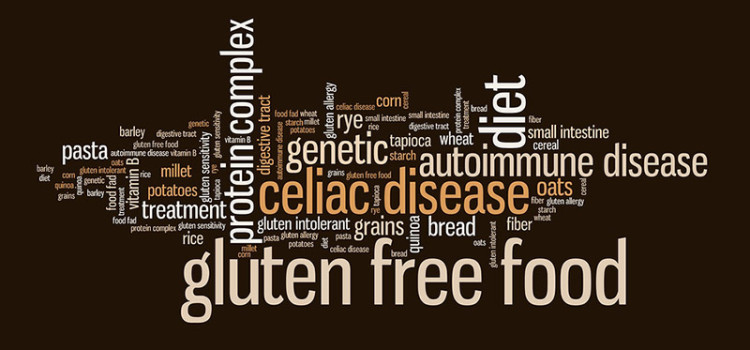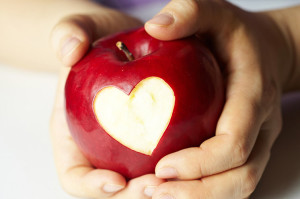Gluten-free is all the rage right now. You can find gluten-free cosmetics and gluten-free shampoo: for some people, contact with even very, very low levels of gluten in lipstick, skin lotion or shampoo triggers a painful, even excruciating reaction. On the other end of the spectrum, for some people a gluten-free lifestyle—let alone one that involves gluten-free cosmetics—is a fad. Let’s dig in, shall we?
What Is Gluten?
Gluten is a protein found in wheat and related grains, including barley and rye. It makes dough elastic, so it can rise, and often gives a bouncy or chewy texture to baked goods. Wheat gluten, or seitan in Japanese, is also used as a meat substitute, with a long history in China, Japan, and other Asian nations among Buddhists who do not eat meat.

However, gluten is also found in beer, soy sauce, and used in food products like ice cream and ketchup as a stabilizer. It’s also often used as an excipient, or binder, in medications and nutritional supplements.
What Are Gluten Intolerance and Gluten Sensitivity?
Celiac or coeliac disease, sometimes called celiac sprue, is an autoimmune disease that attacks the small intestine when the sufferer consumes gluten. Celiac disease ranges from such severity that some suffers—and make no mistake, this is a disease that causes real suffering—lose weight, fail to gain weight, or, if young children, fail to thrive. Others have few, if any symptoms: they are “just” fatigued, anemic, or have difficulty concentrating. Vitamin deficiencies are common, and celiac sufferers also have symptoms in organs other than the small intestine. For example, while some celiac sufferers can easily tolerate small amounts of gluten in, say, the lipstick they’re wearing or their mascara or eye shadow—others can’t. Celiac sufferers may also be lactose-intolerant, experience seasonal airborne allergies, and have increased risks of Crohn’s Disease, osteoporosis, intestinal cancers, and reproductive problems.
Non-celiac gluten sensitivity (NCGS) is an umbrella term for all the disorders other than celiac that are triggered by gluten. Some may also be an allergy to wheat itself, which is separate and distinct from being allergic to gluten. NCGS is thought to be more common than Celiac disease, which is itself being diagnosed more frequently than in the past, thanks to better techniques. It should be noted, however, that NCGS can signify the beginning of a progressive path toward celiac disease in some people. In either case, it is worth finding a health and sustainable way to limit or even avoid gluten. And sometimes, sensitivity to gluten is confused with sensitivity to other components of grains and to FODMAPs in general.
So What’s a FODMAP?
FODMAPs are fermentable oligo-di-monosaccharides and polyols. All carbohydrates (sugars) are not created equal, and these are carbohydrates that many people have trouble digesting or absorbing.
Dietary FODMAPs (and their most common sources) are:
- Fructose (agave nectar, fruits, honey, high-fructose corn syrup, etc.)
- Fructans (wheat, garlic, onions, inulin, etc.)
- Galactans (legumes such as beans and lentils, including soybeans)
- Lactose (dairy)
- Polyols (sugar alcohols such as mannitol, sorbitol, and xylitol; “stone” (pit) fruits such as apricots, avocados, cherries, peaches, and plums)
FODMAPs pull water into the digestive tract where, if you’re sensitive to them, they can cause bloating, constipation, cramping, diarrhea and/or gas, especially when eaten in excess. What this means is, a spoon-sized serving of your grandmother’s baked beans probably won’t hurt you, but a larger—even “standard”—serving might result in unpleasant consequences.
A low-FODMAP diet tends to be lower in fiber than a diet of similar quality that doesn’t limit FODMAPs. However, low-FODMAP diets are generally less restrictive and more nutritious than gluten-free diets for the simple reason that the body is reacting to a physical characteristic of these foods, rather than treating them as a toxin and turning on itself. Eating a low-FODMAP diet has been observed to greatly relieve the symptoms of irritable bowel syndrome in many people.
Why Gluten-free Doesn’t Necessarily Mean “Healthier”
The only treatment for celiac is to avoid gluten. For life. And unless extreme care it taken, a gluten-free diet can easily be deficient in necessary vitamins and minerals, because wheat products are so often fortified with them. And because commercially-prepared gluten-free foods tend to substitute starch for flour, they tend to lack fiber, as well as the iron and folate that have been used to enrich breads for a century now.
…or “Will Help You Lose Weight”
And commercially-prepared gluten-free food probably won’t help you lose weight. Why? It’s not just lower in fiber, which is vital to your body’s regulation of blood sugar, it tends to be high in starch, which your body rapidly converts to blood sugar and then stores as fat. To improve the taste and the texture, “gluten-free” foods also tend to be higher in sugar, salt and unhealthy fats, especially certain trans fats. These trans fats are wonderful at improving the texture of commercially-baked goods but they are very bad for humans: the body can’t use them to regulate blood sugar or repair muscle cells. The result is that your body aggressively converts these foods to fat because it can’t figure out how to use them, and they have even been linked to life-threatening disorders such as cardiovascular disease and even cancer. While omission of non-essential gluten from a food such as soy sauce is considered harmless, the gluten-free label on a conventional bakery product such as cake is usually code for, “full of toxic substances.”
Should You Go Gluten-Free If You Don’t Have To?
The increasing range of gluten-free products, and an attempt by some manufacturers to produce nutritious products is an absolute godsend to celiac sufferers and those with NCGS.
However, you shouldn’t buy commercially-prepared foods labelled “gluten-free” under any illusion that they are inherently healthy. Many of them are actually likely to be less nutritious, more fat-storing and more expensive than their regular counter-parts. Not what you want.
You should be extremely aware that “gluten-free” is a marketing tactic used by many food manufactures to use inferior ingredients, such as cheaper starch and manufactured oils, then slap a higher price tag on them. You must read the nutrition labels to find out whether it’s a genuinely healthy product that meets a real need or a cash-cow that will increase your weight and health problems.
This doesn’t mean you can’t or shouldn’t minimize your consumption of gluten, for any reason—it just means that care should be taken to avoid replacing set of problems with another. A healthy gluten-free diet should be based on vegetables, fruit, pseudo-cereals such as amaranth, buckwheat, quinoa and chia seeds, some cereal grains such as corn, rice (especially brown rice) and sorghum, and as well as minor cereals like teff and millet. Even oats can be consumed if not contaminated by gluten in harvesting and packaging. Some individuals with gluten sensitivity and even celiac have found they can tolerate “ancient” wheat-like grains known as spelt, einkorn, emmer, Khorasan (Kamut®), and farro, among others, due in part to a lower content of gluten—particularly the most allergenic types; however, it is recommended that an experimentation with these first take place under the supervision of a qualified healthcare professional.
Examples of easy, tasty substitutions include lettuce or flax wraps rather than bread, or baking with sorghum and coconut flour rather than rice and tapioca flour and corn starch. All these are truly healthy gluten-free options.
The Bottom Line:
Whether you have NCGS, or a wheat or FODMAP sensitivity, the basics of a healthy diet are still the same: it should be founded on vegetables, lean proteins, and a limited but still generous supply of good fats—and/or proteins high in good fats—and if tolerated, whole grains (such as brown rice, quinoa, amaranth, and buckwheat), legumes, fruit, nuts, and seeds. Refined sugars and carbohydrates and hydrogenated (hardened) oils should be avoided whenever possible. And portion control is still important.




Hello, I have been told that my autoimmune disease of Hashimoto’s thyroiditis is caused by grains and gluten. That they create leaky gut syndrome and cause things to pass through the intestinal membrane to the blood stream and it causes an exagerated immune response. Other labs results, besides just the thyroid labs , backs this theory up. So this can be a real issue for folks, even if it is not celiac disease. Thanks
Good read!
Hi, kjb1130. In your profile, be sure to select “Gluten-Free” in your dietary needs in the lower right-hand corner. That way, when you go through the Menu Planner application, the menus you build will be gluten-free.
Hello, I do have Celiac and I have to eat Gluten Free, I was diagnosed six years ago, so please make my menus Gluten Free, thank you…Kim
I have been a celiac for over 10 years. Before it become a fad of sorts. I replaced my bread with potatoes and flour with potato and rice flours. I have gained 50 lbs in the past ten years. I am excited to try these recipes.
I would like to list one criteria for going gluten free. Two doctors have been after me to go gluten free to help with fibromyalgia.
Last year I finally decided to try. I can honestly say it has helped. My muscle soreness is less. Not gone but less. An added benefit has been less gas:). So if anyone out there has fibro, it may be worth a try.
Good article I think. I am working the FODMAPs diet plan and am glad not to get hung up in the “Gluten” fad.
Iterating article
Nice article, everyone should read it. 🙂
I think this could be an issue for me so I want to cut dine on broad